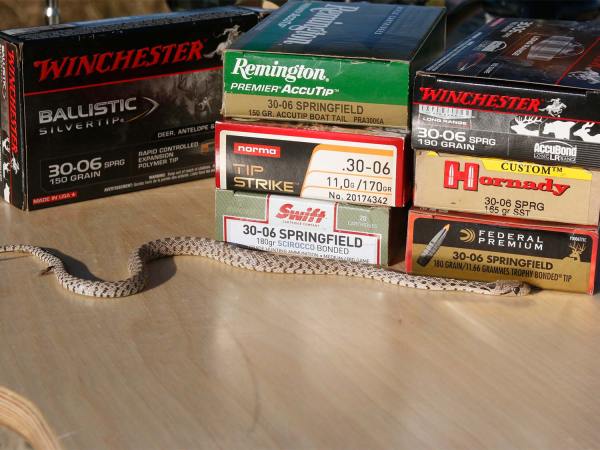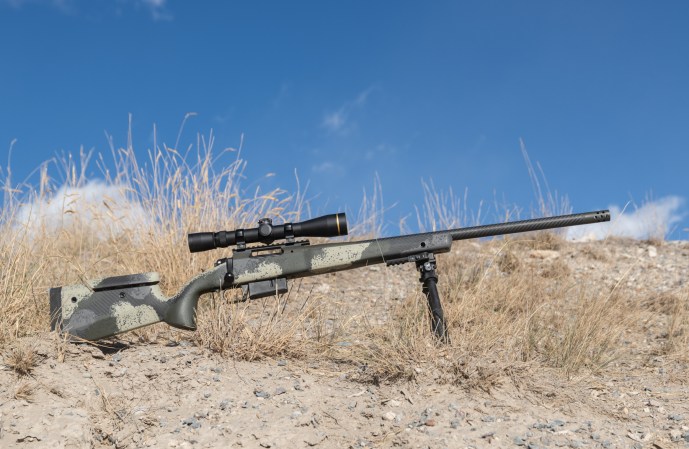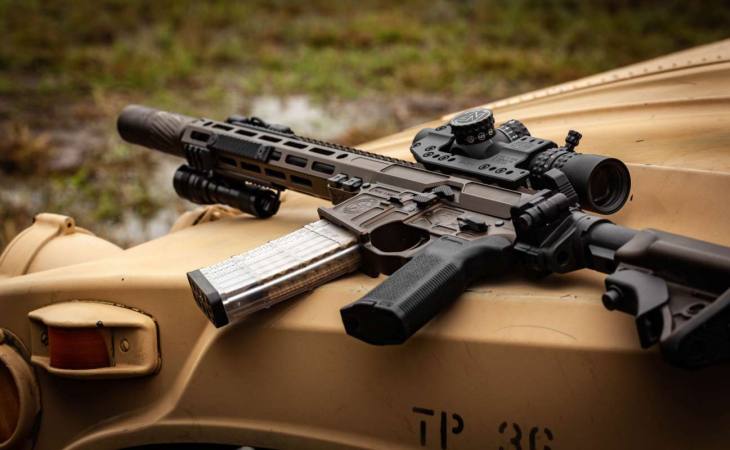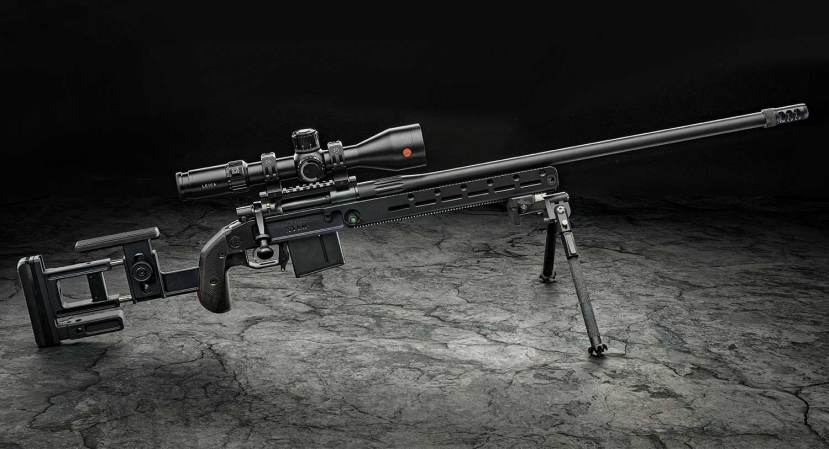We may earn revenue from the products available on this page and participate in affiliate programs. Learn More ›

If your passion is hunting, guns, and ammo, (and you’re an adult who’s making a decent wage) there’s no reason to settle for a so-so rifle topped with an equivalent scope. Sure, an entry-level rifle made sense when you were young and broke, but now you have a little extra scratch to put towards a better bolt gun.
If you can afford a high-quality rifle, I suggest buying one with an equally competent scope. At some stage in life, after years of hard work, you’ve earned it. It may not necessarily shoot much better than your first bargain rifle, but it certainly will fit and feel better. And it will be something you can be proud to pass on to your son or daughter, instead of rusty old bolt gun.
But which rifle? How will you decide on a caliber, action, stock, barrel, and scope? Well, after many years, hunting with many guns, here are my suggestions for when you finally decide to pull the trigger on your first nice rifle.
Start with the Right Cartridge
There’s a lot to consider, but the cartridge is the foundation of this decision. After hunting for a decade or two, you know roughly what cartridges and bullets work for the kind of hunts you enjoy. Stick with those. Don’t make the classic mistake of falling for the hottest number of the week or the flattest-shooting super magnum. Certainly you can upgrade from, say, a .30/30 to a .308 Winchester or even a .300 Ruger Compact Magnum. But if all your hunting is for woodland whitetails and your longest shot opportunity ever was 93 yards, that tried-and-true .30/30 might still be your best option. On the other hand, if future plans call for a trip out West for pronghorn, mule deer, elk, and, some day, Alaska for moose and bear, you should upgrade to a more versatile, flatter-shooting cartridge.
When choosing among the dozens of extant cartridges, consider recoil levels, barrel wear, rifle weight, and barrel length. Factor in factory ammo availability, bullet options, and ammo costs. It’s silly to fret over a cartridge that costs $5 a pop when that pop results in a 6×6 bull elk, but when you’re shooting 100 rounds a month training for that elk, it comes into play. Many rounds from 6.5 Creedmoor through .30/06 and .338 Federal are capable of cleanly taking elk without breaking the bank—or your shoulder.
With cartridge pricing, volume matters. The most popular rounds might not be the sexiest, but they’ll be widely available from multiple manufacturers with extensive options in bullet types and sizes. Common, popular rounds will be the first ones loaded and shipped, the first ones on sale, and—in all seasons—the least expensive (relatively). So be willing to sacrifice a few feet per second in muzzle velocity, a few foot-pounds of downrange energy, and even a few inches of additional wind deflection. Owning a rifle that shoots an inexpensive cartridge should inspire you to practice more. And that’s a better route to shooting precision than the fattest, longest, flattest shooting cartridge in the world.
Consider one more thing: shootability. A .300 magnum might be the most pragmatic choice for handling anything anywhere, but how often are you going to hunt anything anywhere? If you mainly hunt whitetails and coyotes, wouldn’t you get more use out of a 6.5 Creedmoor or even a .243 Winchester? If you’re going to spend big on a special, high-end rifle, why not get one you’ll likely shoot more often? I once had to choose a chambering for a fine walnut-stocked rifle. I went with a .243 because I knew I would shoot it more often at coyotes, fox, varmints, pronghorns, and even tin cans if I wanted.
The Best Rifles, by Caliber
Here are my suggestions for the best all-round cartridge options in each caliber, all of them adequate to superb for all North American game (short of the big bears) and African game (short of the Big Five).
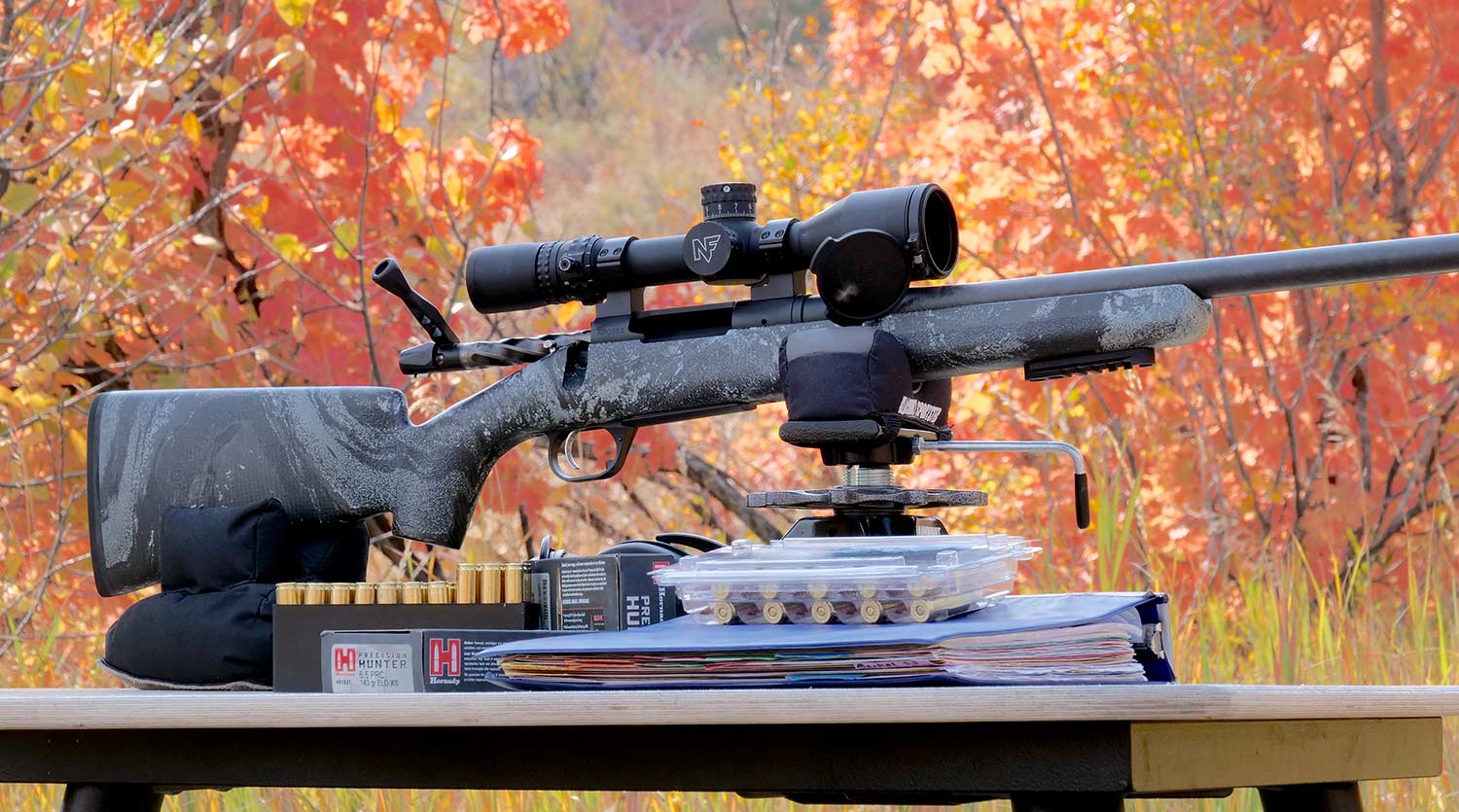
26-caliber: The 6.5 Creedmoor is the optimal cartridge because of its versatility and ammo availability. The .260 Rem., 6.5-284 Norma, 6.5 PRC, and 6.5 RPM Weatherby are faster, but less available and the ammo is more expensive on average. The Creedmoor is ubiquitous. But if I was going to buy a rifle in this caliber, it would be the AllTerra Carbon in 6.5 PRC. AllTerra is the ultimate in high-tech materials. The rifle is fairly lightweight at 6.5 pounds, it guarantees 1/4-MOA accuracy, and it’s a nicely balanced 26. Not too fast, not too slow.
27-caliber: Winchester’s M70 Featherweight in .270 Win. is a classic rifle in a classic caliber, that’s controlled-round fed, and has beautiful lines. It’s a bit heavy, but has a slim stock and is beautifully balanced. The 27 WSM, 270 Wby Mag., 277 Fury, and 27 Nosler are faster rounds, but pricier and much, much harder to find on dealer shelves. Recoil is higher, and barrel life is shorter with these cartridges as well. Besides, the .270 has proven itself on everything for 95 years.
28-caliber: It’s a toss-up between the Ultra Light Arms M20 in .284 Win. and Rifles, Inc. Strata Stainless in .280 AI. Both are the ultimate mountain rifles at about 5 pounds without a scope, and shoot 1/2 MOA groups. Chamberings in 7mm Rem. Mag. are best in terms of ammo price and availability if you decide to buy a rifle in that offering. The 7mm-08 Rem., 7×57 Mauser, and .280 Rem. are easier on shoulder and barrel, but less popular with fewer bullet options in factory ammo. The other 7s are hard to find and usually more expensive. If you handload, however, the .280 AI and .284 Win. (or any of the larger magnums) are a good option.
30-caliber: A custom Winchester M70 stainless with a AAA Claro Walnut stock in .30/06 or an H-S Precision 2000 in .300 WSM are your best bets. The heavy M70 is better for flat country, and short hunts. If you hunt the mountains, the H-S Precision synthetic weighs about 7 pounds. The .308 Win. or .30/06 are the most popular and will give you a wide variety of rifles to select from. The .30/06 is the better bet for bullets heavier than 180-grains. There’s plenty of fairly-priced ammo options for both. Even more versatile is the .300 Win Mag…if you can handle the recoil. You probably won’t be shooting hundreds of targets with the .300 unless you like wearing a life jacket at the range, though you can hand-load ammo to make .308 more shootable in higher volumes. You could also go with any of the other .300 magnums, but the recoil is worse and the ammo is more expensive and less available.
33-caliber: The .338 is little-known and an under-appreciated short-action. But it is a perfect match for this caliber. If you decide to buy a gun in this offering, you can’t go wrong with the Kimber 84M topped with Leupold 2.5-8X36mm scope. Though the 33s have never been extremely popular, they are deadly effective. The .338 Win. Mag. is the best-known, but it recoils harder than most hunters care to absorb. The .338 Federal is the .308 Win. necked up, so it’s much easier to shoot. Despite the lighter powder charge, it runs right with the .30/06 to 300 yards or so.
What to Look For in an Action
Bolt actions are the hands-down favorite. It’s simple, strong, durable, compact, easily tuned, customized, and accurized. Either push feed or controlled-round feed styles are fine. Just make sure the extractor is strong with a good track record.
Autoloaders were second-class citizens for years due to inaccuracy, but they are gaining ground. Many are as accurate as the best bolt actions. Bulk and weight are issues with many of these rifles, but if you love them, go for it. Just be aware that many countries—and even some states in the U.S.—do not allow them for hunting.
Single-shots will not rise to the top of many lists, but for the careful, thoughtful hunter dedicated to perfection, single-shots are quite effective. Slim, sleek, and shorter than repeaters, single-shots are a joy to carry. The high-end falling blocks are especially fine, strong as any bolt-action, and handle beautifully. Single-shots are not really limited to one shot. They should more precisely be called “single loaders.” Trained operators can get off seven aimed shots with a falling-block like the Ruger No. 1 or Dakota Model 10 faster than most folks can rattle seven down range with a bolt-action. More significantly, single-shots empower you to make that first shot good. No need for more.
Lever-actions are nostalgic, fun guns generally considered mid-range performers. But these are just the models like Henry’s, Marlins, and Winchester with tubular magazines that are restricted to blunt-nosed bullets. Vertical stack magazines in the Browning BLR and Henry Long Ranger knock-off permit sharp spire points for better downrange ballistics. Lever guns are harder to tune and accurize than bolts, but operating them is oddly satisfying. Most popular these days are big bores designed to put the hurt on large, sometimes ornery critters.
Slide-action pumps are a wonderfully slick and quick action, but increasingly rare if not irrelevant. Remington was the last builder and they may be phasing out their pump line. Still, if you find a used slide-action centerfire you love, buy it.
High Tech vs. Classic Quality

Are you going to drop the big bucks on high tech or classic quality? This is mostly an esthetic choice. With proper bedding, walnut stocks are just as consistent as the best synthetics. I don’t recommend settling for a molded “tupperware” plastic stock. No one puts those on a top-end rifle. Hand-laid fiberglass can include Kevlar and carbon fibers in strategic locations where they contribute the most. A highly-figured walnut stock won’t make your rifle shoot any more precisely, but it can give you pride of ownership that’s beyond price. A gorgeous walnut blank might set you back $1,000, which doesn’t sound too bad, until you add the price of checkering and finishing. Those finishes can easily triple the cost. But, once the dust settles, a gorgeous walnut handle can inspire you for decades.
Barrel and action can be chrome-moly or stainless. Today’s stainless are nearly as slick and smooth as the best chrome-moly with the bonus of minimizing rust. Yes, new ceramic finishes wrap external metal in rust-proof coatings, but that doesn’t extend to the bore. You can also choose between steel and carbon-wrapped steel. Carbon is stiffer and stronger than steel longitudinally, which helps accuracy and barrel cooling, but I question its durability and resistance to impact damage. You may want to research this topic deeply. Will a sharp rap against a rock or edge of a blind crush or crack some of the carbon fibers? Will the epoxy matrix holding it all together survive for decades?
With the Basics Out of the Way…

Now it’s time contemplate things like overall mass, barrel length and taper, stock shape, trigger brand, pull weight, magazine style, and so on.
An axiom is that the heavier the rifle, the more accurate the rifle. That may be true, but you still have to carry it. The old standard maximum threshold of 8 pounds is still valid, but with today’s precision stocks, barrels, and ammunition, a 6-pound and even 5-pound rifle can shoot as accurately as 10 pounders in hunting calibers. I’m not recommending you choose a 6-pound rifle for winning bench-rest or PRS competitions. But if you plan to hike the Plains and climb the mountains for mule deer, elk, sheep, moose, and more, remember that ounces matter. And you’re not getting any younger. If you just stroll to a blind and sit all season, go heavy. Personally, I feel a connection and kinship with a light, lively hunting rifle that is hardly noticeable on my shoulder, springs to my face like a fine 20-gauge shotgun, and points where I’m looking. I neither want to drag my rifle, nor wrestle it into position.
The shape and contour of the stock contribute a lot to the feel of that weight. A slim grip and fore-end that fit your hands make things feel more controllable, lighter. A rounded fore-end works best for handheld shots, but a flatter fore-end bottom steadies better on rests. I like a compromise with a slim flat bottom but rounded sides and even a bit of taper or tumblehome near the barrel channel. Handle a bunch of rifles and study why one feels clunky, another lively, and you’ll figure out what you like.
Read Next: How to Pick One Rifle to Hunt Everything
Keep in mind that a high comb better aligns your face with a scope. And a fat, nicely rounded comb minimizes cheek slap and that bite to your cheek bone under recoil. A raised cheek piece also tames this cheek bite while providing an easy and consistent cheek weld. Finally, a comb that rises toward the rear slides down and away from your face under recoil. Nice.
By the way, walnut stocks can be as light as many synthetics. Don’t assume wood means too much weight. But if you get wood, get wood with an epoxy-bedded action and recoil lug and/or an aluminum pillar bedding. The barrel can be floating or bedded. Some shoot better one way or the other. This can be easily changed with sandpaper or epoxy, but most easily on one-piece bolt-action stocks, not two-piece lever, auto, pump, or single-shot stocks.
Barrel contour and length are a critical part of weight. The thicker the barrel, the more consistently it will shoot as the barrel heats. Thin barrels can be deadly accurate for three, perhaps four quick shots, but the more powder you burn and the faster you cycle rounds, the faster a thin barrel will reach egg-frying temperatures. And then the thin barrel begins to shift. Before you discount the idea of a light, thin barrel, though, consider how many times you’ll likely shoot at game. A careful and consistent shooter will likely hit his game with the first shot, maybe give it one or two insurance shots. The barrel has all day to cool, maybe several weeks or even a year. If, however, you anticipate culling several dozen feral hogs in short order, or engaging a pack of ravenous coyotes, a thicker barrel might be in order.
Barrel length contributes to muzzle velocity. As a rough standard, figure 30 to 50 fps for each additional inch after 18 inches. The larger the cartridge case, the higher the powder volume and the more barrel length generally needed to burn it all. That’s 18 to 22 inches for short-action, .308 Win. volume cartridges, and about 22 inches for standard length, .30/06 volume cartridges. Figure 24 to 26 inches for maximizing potential of most big magnums and of the newest, high-volume cartridges without Magnum in their name (like 7mm STW, 28 Nosler, etc.).

The downside to short barrels is increased muzzle flip and blast. Trust me, you do not want to hear a 27 Nosler erupt from a 20-inch barrel. My wife doesn’t even like the roar from the 18-inch barrel of her 7mm-08. But she does love carrying and swinging that short-barreled rifle in brush and woods. Long barrels moderate muzzle blast at your position. And, of course, they maximize velocity. But they can be a pain to drag through brush and woodlands, and even steep mountains when that long tube protruding above your shoulder can rub and catch on overhead cliffs and boulders. Smirk if you want, but I’ve nearly been pushed off mountain goat terrain by this long-barrel interference. More likely you’ll curse long barrels for the inconvenience of storing them, finding cases and horse scabbards that fit them, and getting them in and out of planes, trains, and automobiles.
When contemplating magazines, don’t get overwhelmed by capacity. High-capacity magazines are great for competitions, self-defense, perhaps varmint shooting, but a good hunter rarely fires more than three times before his tag is punched or his game gone. Detachable magazines are convenient in states where magazines must be completely empty when entering a vehicle or building (they’re a good safety precaution, anyway). Detachables that protrude below the belly of the stock ruin the belly balance carry point and can poke you in the back while you’re carrying your rifle. Some get in the way of prone shooting, and even bench shooting. High-volume magazines add unneeded weight.
Flush magazines under hinged floorplates maintain an easy carry balance, hold 3 to 5 rounds, and can be emptied quickly without cycling the action. And you never have to worry about dropping, misplacing, or losing an integral magazine. Blind magazines, which are usually part of an ultralight rifle, are even simpler with no extra weight or moving parts in the floorplate. But unloading requires running them through the action, one by one.
Triggers on bolt-actions can be rather easily tuned by a gunsmith (and sometimes even the gun owner) via simple screws. The Savage AccuTrigger style is increasingly popular and easy to safely adjust and use. Aftermarket triggers from Timney, TriggerTech, and many others can be quickly and easily placed onto many bolt-actions. Other action styles are not as easily “re-triggered.” Regardless what trigger you choose, resist the urge to make it too light. A pound or less is fine on a target rifle, but for hunting under rough conditions where hands may be sweaty or frozen and under gloves, light triggers are too easily set off before you’re ready. Most experienced hunters run 2- to 4-pound triggers, with 3 pounds a good middle ground.
What Kind of Accuracy Do You NEED

Most rifle makers are now guaranteeing MOA accuracy or better. But if you have to pay the shipping on a rifle that fails to live up to the claim, you might not cash in on that. Sure, pay attention to those accuracy guarantees, but don’t feel as if you need a 1/4 MOA rifle. This is a hunting rifle. If it shoots MOA, it should keep all bullets inside a 1-inch circle at 100 yards, a 3-inch circle at 300 yards, a 6-inch circle at 600 yards, etc. Most big game from pronghorn to moose have at least an 8-inch vital zone. Even a 1.5-MOA rifle should keep all bullets inside 8 inches at 500 yards.
Buy the Best Glass You Can
Don’t blow all your cash on the rifle. Without a good scope, it’s not going to hit much. I always say it’s better to spend more on a scope than the rifle itself since many $500 rifles these days shoot MOA, but without a good scope to direct them, they won’t shoot well. So don’t buy a $3,500 gun and slap a $150 optic on it.
First, a good scope first means one that holds its zero. Magnification, brightness, and turret dialing are superfluous if the scope directs the bullet to a different place with every shot. So shop for scopes with a reputation for consistent durability, shot after shot. Hard-kicking rifles require tougher scopes than do lighter-recoiling ones. And over time, all recoil adds up to wear out scopes.
Resist monster sized scopes, too. I know the 34mm main tube, 56mm objective, 2-30X scopes are all the rage right now, but if they aren’t what you want or need on a nicely-balanced hunting rifle, why saddle your rifle with one? Veteran hunters know you can adequately target deer as far as 500 yards with a 10X or even 6X scope if you know how to shoot. In short, balance the scope to the rifle and consider your realistic needs. (That said, if you love powerful, complicated, long-range scopes, and you’re into long-range shooting, get what you want; I’m mostly focused on general purpose hunting rigs here.)
In addition to matching the scope’s size to your rifle, and the game you hunt in the habitat where you hunt, shop for qualities that really make the scope shine. Brightness is a product of the objective lens’ diameter, divided by power, so you don’t necessarily need a huge objective. At 10X power, a 50mm objective yields a 5mm exit pupil at the eyepiece (this is the window of light that enters your pupil). If it’s larger than your pupil, the extra rim of light is wasted, bouncing of your iris. If it’s smaller, you get all the light with room left over for more. Your pupils probably dilate from 2.5mm in bright light to 5mm or 6mm at dusk, to perhaps 7mm in the dark. So a 5mm exit pupil would be close to maximum brightness. In the real world, however, a 4X exit pupil can be nearly as effective if other brightening features are included.
The critical brightness feature is fully multi-coated lenses. This means every lens—every air-to-glass surface—is coated with multiple layers of anti-reflective materials. These ensure that light passes through, rather than bouncing off, each surface. Proper anti-reflection coatings can double a scopes brightness.
Shop also for good eye relief. Too many of us dote on a wide field of view, but this always comes at the expense of eye relief: the distance from the eyepiece lens to your eye. The harder your rifle kicks, the more eye relief you want for preventing “scope eye.” About 3.5 inches is good for .30-06 levels of recoil, and 4 inches is better. This may cost you a few feet of wide angle view at 100 yards, but you’re putting a reticle on a tiny spot on the animal. Why do you need to see half the county on each side of it?
How much should you spend on a scope? Certain brands are getting pretty solid and dependable at $500, but the $1,000 price tag really starts to lock in quality. The big challenge is identifying durability. That’s a factor that only shows up after years or thousands of shots, so reputation plays a big role here. Even so, there are new scope makers with no reputations who are selling great optics. Investigate the materials and construction, and ask about top-quality internal parts made of proven, durable metals.
Finally, study those guarantees. A manufacturer that guarantees its products against everything forever suggests confidence that those products are well-made, and will perform.
Ultimately your “high end” rifle will reflect what you value, so take the above advice in context. One shooter’s gorgeous walnut-and-blued Model 70 in 30-06 may be a long-range shooters antique. And another shooter’s fancy, high-end, PRS chassis rifle in 6.5 PRC with a 28-inch barrel and pink metal-flake 12-position adjustable butt might make the .30/06 shooter puke.
As long as the rig you’re considering combines quality construction and performance with the look and function you want, that’s all that matters. It’s your fine rifle, after all.


